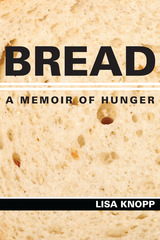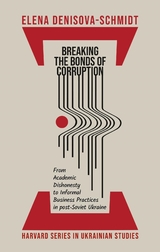39 start with S start with S
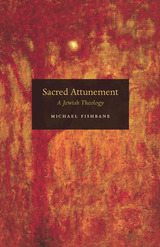
The first part of the book regrounds theology in this setting and opens up new pathways through nature, art, and the theological dimension as a whole. In the second section, Fishbane introduces his hermeneutical theology—one grounded in the interpretation of scripture as a distinctly Jewish practice. The third section focuses on modes of self-cultivation for awakening and sustaining a covenant theology. The final section takes up questions of scripture, authority, belief, despair, and obligation as theological topics in their own right.
The first full-scale Jewish theology in America since Abraham J. Heschel’s God in Search of Man and the first comprehensive Jewish philosophical theology since Franz Rosenzweig’s Star of Redemption, Sacred Attunement is a work of uncommon personal integrity and originality from one of the most distinguished scholars of Judaica in our time.
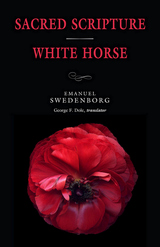
In Sacred Scripture, Swedenborg explains how the inner meaning of the Bible relates to its outer (literal) meaning, and he cites numerous biblical passages to show how similar themes emerge again and again. He describes two distinct layers of inner meaning—the heavenly and the spiritual—and shows how an understanding of that inner meaning strengthens a person’s connection with Deity and with heaven.
White Horse begins with a short summary of the spiritual meaning of the white horse described in Revelation 19:11. In form, what then follows is a series of statements about the inner meaning of the Bible with references to explanatory passages in Secrets of Heaven. However, when read in sequence, those statements are also a concise summary of Swedenborg’s theology of biblical interpretation.
The perspective provided by these two short works allows the reader to see through the Bible’s clouds of baffling, obscure, and seemingly inconsistent details to the power and unity of divine love and wisdom within the text. Students or seekers interested in Swedenborg’s teachings about the interrelationship between the spiritual world and the physical one will find this volume a helpful guide. Sacred Scripture / White Horse is part of the New Century Edition of the Works of Emanuel Swedenborg (NCE), an ongoing translation series. The NCE series incorporates the latest scholarship and translation standards for a more accurate and accessible rendering of Swedenborg’s works.
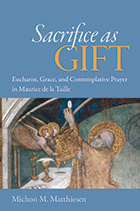

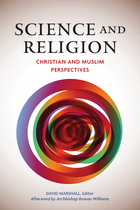
Science and Religion is a record of the 2009 Building Bridges seminar, a dialogue between leading Christian and Muslim scholars convened annually by the Archbishop of Canterbury. The essays in this volume explore how both faith traditions have approached the interface between science and religion and throw light on the ongoing challenges posed by this issue today. The volume includes a selection of relevant texts together with commentary that illuminates the scriptures, the ideas of key religious thinkers, and also the legacy of Charles Darwin.
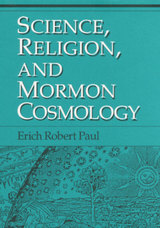
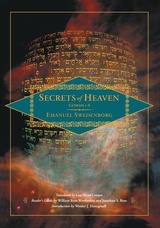
The first major theological work of the Swedish scientist-turned-seer Emanuel Swedenborg, Secrets of Heaven is in one sense a traveler's account. It reveals the unseen realms that await beyond death--the light, the warmth, and harmony of the angelic heavens and the varied darkness of the multitudinous hells. But in addition, the work offers a detailed examination of Genesis and Exodus, providing a model for a new way to understand the entire Bible. Prized for both the simplicity of its explanation and the breadth and depth of its vision, Swedenborg's reading of Scripture discloses layer upon layer of inner meaning, all without undermining the power and import of the literal word.
This first of the multivolume work contains an introduction by Wouter J. Hanegraaff, professor of History of Hermetic Philosophy and Related Currents at the University of Amsterdam, and a reader's guide by Swedenborgian scholar William Ross Woofenden and New Century Edition Series Editor Jonathan S. Rose.
The New Century Edition of the Works of Emanuel Swedenborg is a modern-language, scholarly translation of Swedenborg’s theological works. The series’ easy-to-read style retains the dignity, variety, clarity, and gender-inclusive language of Swedenborg’s original Latin, bringing his thought to life. Introductions and annotations by eminent, international scholars place Swedenborg’s writings in their historical context and illuminate obscure references within the text, enabling readers to understand and trace Swedenborg’s influence as never before.
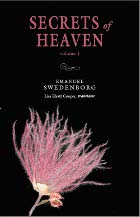
The first major theological work of the Swedish scientist-turned-seer Emanuel Swedenborg, Secrets of Heaven is in one sense a traveler's account. It reveals the unseen realms that await beyond death--the light, the warmth, and harmony of the angelic heavens and the varied darkness of the multitudinous hells. But in addition, the work offers a detailed examination of Genesis and Exodus, providing a model for a new way to understand the entire Bible. Prized for both the simplicity of its explanation and the breadth and depth of its vision, Swedenborg's reading of Scripture discloses layer upon layer of inner meaning, all without undermining the power and import of the literal word.
The New Century Edition of the Works of Emanuel Swedenborg is a modern-language, scholarly translation of Swedenborg’s theological works. The series’ easy-to-read style retains the dignity, variety, clarity, and gender-inclusive language of Swedenborg’s original Latin, bringing his thought to life.
This portable edition of Secrets of Heaven vol. 1 includes the text of the New Century Edition without the introduction, annotations, and other supplementary of the deluxe hardcover and paperback editions.
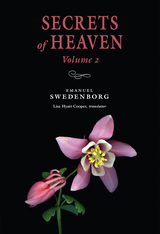
Secrets of Heaven is Emanuel Swedenborg’s magnum opus, a fifteen-volume work that delves into the inner, spiritual meaning of the Bible. Starting from the first verse, Swedenborg goes through Genesis and Exodus verse by verse, sometimes word by word, uncovering the fascinating teachings behind the literal account. By doing careful comparison of passages and tracing individual images and motifs through the Bible, he demonstrates that it contains a profound, coherent, and unified inner meaning.
The second volume covers Genesis 9–15, beginning with God’s covenant with Noah following the Flood and then following the familiar story of the patriarch Abraham. In the process, Swedenborg discusses the concept of regeneration, or spiritual rebirth, and describes the way the people act before and after rebirth. He also talks about an epoch of human history that he calls the ancient church and the spiritual state of the people in that church. Interspersed with the biblical commentary are chapters on related topics such as the lives of angels in heaven, how distance and time work in the spiritual world, and the nature of hell.
Secrets of Heaven provides essential insight into Swedenborg’s theology and lays the groundwork for the rest of his writings. This new translation, part of the New Century Edition series, makes his insights into Scripture and his accounts of his spiritual experiences more accessible than ever before.
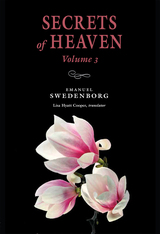
This third volume covers the inner meaning of Genesis 16–21, giving an account of the early stages of Jesus’ inward development, including the interactions of his human side and his divine side. It additionally addresses other topics, and in particular the true nature of the Last Judgment.
This new translation, part of the New Century Edition series, makes Swedenborg’s insights into Scripture and his accounts of his spiritual experiences more accessible than ever before.
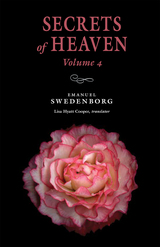
This fourth volume covers the inner meaning of Genesis 22–26, which on the surface recount God’s testing of Abraham and the generational shift that occurs as Sarah and Abraham die, Isaac and Rebekah marry, and Jacob and Esau are born. The intricacies of this narrative are interpreted as the processes Jesus went through inwardly as he united his human and divine natures and established a new religious culture on earth. Much of this volume also explores the concepts of correspondence and representation as underlying realities present in the natural and spiritual worlds and in the Bible.
This new translation, part of the New Century Edition series, makes Swedenborg’s insights into Scripture and his accounts of his spiritual experiences more accessible than ever before.
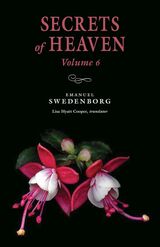
Secrets of Heaven is Emanuel Swedenborg’s magnum opus, a fifteen-volume work that delves into the inner, spiritual meaning of the Bible. Starting from the first verse, Swedenborg goes through Genesis and Exodus verse by verse, sometimes word by word, uncovering the fascinating teachings behind the literal account. By engaging in a careful comparison of passages and tracing individual images and motifs through the Bible, he shows that it contains a profound, coherent, and unified inner meaning.
This sixth volume interprets the inner narrative of Genesis 31–35, in which Jacob leaves Laban’s house, wrestles with God, and reunites with Esau. These acts, Swedenborg argues, are each symbolic of the inner separations, struggles, and unifications that Jesus accomplished on his path to divinity. Swedenborg continues to explore two themes found in previous volumes: the Last Judgment as the ending of an old church and the beginning of a new church, and the correlation between human individuals and the “universal human.”
This new translation, part of the New Century Edition series, makes Swedenborg’s insights into Scripture and his accounts of his spiritual experiences more accessible than ever before.

The author studied and compared a Pentecostal group and a Seventh-day Adventist group in preparation for this work. The question which stimulated the investigation can be stated as a paradox. In the Adventist case, why should persons who firmly believe that God is soon to destroy the world work so diligently and against formidable odds to improve their own secular fortunes? In the Pentecostal case, why should persons who believe that God is available for direct aid in every human contingency not use this power for their own advancement?
In theorizing about the relationship between an individual's position in the socioeconomic system and his sect affiliation, Mr. Schwartz asserts that the specifically ideological component of a creed resides in the ways in which believers conceptualize the meaning of secular problems.
The study as a whole attempts to reveal what makes a special set of beliefs attractive to a person grappling with certain secular exigencies, and how these beliefs affect his view of secular matters. It develops a model of a religious ideology applicable to any study of the relationship between cultural symbols and social structure.
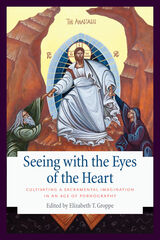
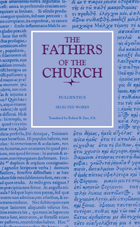
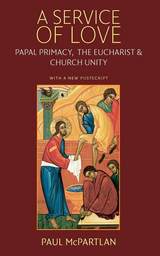
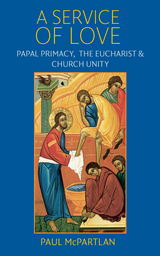
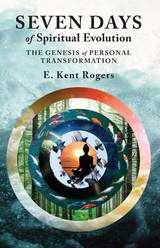
In Seven Days of Spiritual Evolution: The Genesis of Personal Transformation, Rogers responds to a growing movement of biblical literalism by turning to eighteenth-century spiritual teacher Emanuel Swedenborg, who wrote prolifically about how the deeper symbolic meanings of Bible text can provide spiritual guidance. Using Swedenborg’s language of correspondences, Rogers shows us how Genesis 1 describes our psychological landscape as it unfolds along the horizons of our inner journey toward God. He draws insightful parallels between the different stages of our spiritual growth and contemporary psychotherapeutic treatment—from person-centered to cognitive to behavioral therapies. To make the intangible tangible, Rogers accesses what he has learned as both a mental health counselor and spiritual practitioner to offer workable methods for improving how we think and behave on a daily basis.
Intended as a tool for anyone who is interested in personal and spiritual development, Seven Days of Spiritual Evolution weaves psychology, spirituality, and everyday experience into a practical approach to growth. “Faith isn’t about drawing lines in the sand or judging others,” Rogers says, “it’s about learning how to love others and to love God.” Ultimately, it’s about opening our hearts to the Bible as a useful and never-ending guidebook for God’s all-loving, redeeming, and merciful work in the world.

Tracing the views of the church through its official and unofficial publications and through interviews with dozens of Adventist informants, Laura Vance reveals a significant shift around the turn of the century in women's roles advocated by the church: from active participation in the functioning, spiritual leadership, teaching, and evangelism of Adventism to an insistence on homemaking as a woman's sole proper vocation. These changes in attitude, Vance maintains, are inextricably linked to Adventism's shift from sect to church: in effect, to its maturation as a denomination.
Vance suggests that the reemergence of women in positions of influence within the church in recent decades should be viewed not as a concession to secular feminist developments but rather as a return to Adventism's earlier conception of gender roles. By examining changes in the movement's relationship with the world and with its own history, Seventh-day Adventism in Crisis offers a probing examination of how a sect founded on the leadership of women came to define women's roles in ways that excluded them from active public participation and leadership in the church.
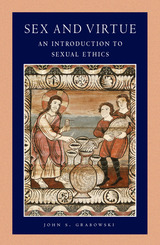
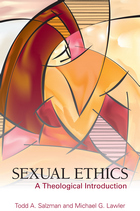
Two principles capture the essence of the Catholic tradition on sexual ethics: that each and every marriage act must remain open to the transmission of life, and that any human genital act must occur within the framework of marriage. In the Catholic tradition, moral sexual activity is institutionalized within the confines of marriage and procreation, and sexual morality is marital morality.
But theologians Todd Salzman and Michael Lawler contend that there is a disconnect between many of the Church’s absolute sexual norms and other theological and intellectual developments explicitly recognized and endorsed in the Catholic tradition, especially since the Second Vatican Council. These developments include the shift from a primary static worldview to a historically conscious worldview, one that recognizes reality as dynamic, evolving, changing, and particular. By employing such a historically conscious worldview, alternative claims about the moral legitimacy of controversial topics such as contraception, artificial reproduction, and homosexual marriage can faithfully emerge within a Catholic context. Convinced of the central role that love, desire, and fertility play in a human life, and also in the life of Christian discipleship, the authors propose an understanding of sexuality that leads to the enhancement of human sexual relationships and flourishing.
This comprehensive introduction to Catholic sexual ethics—complete with thought-provoking study questions at the end of each chapter—will be sure to stimulate dialogue about sexual morality between Catholic laity, theologians, and the hierarchy. Anyone seeking a credible and informed Catholic sexual ethic will welcome this potentially revolutionary book.

Two principles capture the essence of the official Catholic position on the morality of sexuality: first, that any human genital act must occur within the framework of heterosexual marriage; second, each and every marriage act must remain open to the transmission of life. In this comprehensive overview of Catholicism and sexuality, theologians Todd A. Salzman and Michael G. Lawler examine and challenge these principles. Remaining firmly within the Catholic tradition, they contend that the church is being inconsistent in its teaching by adopting a dynamic, historically conscious anthropology and worldview on social ethics and the interpretation of scripture while adopting a static, classicist anthropology and worldview on sexual ethics.
While some documents from Vatican II, like Gaudium et spes ("the marital act promotes self-giving by which spouses enrich each other"), gave hope for a renewed understanding of sexuality, the church has not carried out the full implications of this approach. In short, say Salzman and Lawler: emphasize relationships, not acts, and recognize Christianity's historically and culturally conditioned understanding of human sexuality. The Sexual Person draws historically, methodologically, and anthropologically from the best of Catholic tradition and provides a context for current theological debates between traditionalists and revisionists regarding marriage, cohabitation, homosexuality, reproductive technologies, and what it means to be human. This daring and potentially revolutionary book will be sure to provoke constructive dialogue among theologians, and between theologians and the Magisterium.
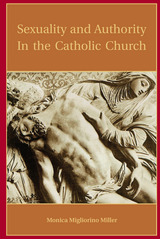
If authority is derived from Eucharistic worship, then authority is fundamentally the authority of a covenant. This book shows that this covenant is spoken according to a primordial sexual language rooted in creation itself.
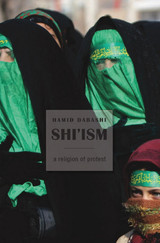
For a Western world anxious to understand Islam and, in particular, Shi’ism, this book arrives with urgently needed information and critical analysis. Hamid Dabashi exposes the soul of Shi’ism as a religion of protest—successful only when in a warring position, and losing its legitimacy when in power.
Dabashi makes his case through a detailed discussion of the Shi’i doctrinal foundations, a panoramic view of its historical unfolding, a varied investigation into its visual and performing arts, and finally a focus on the three major sites of its contemporary contestations: Iran, Iraq, and Lebanon. In these states, Shi’ism seems to have ceased to be a sect within the larger context of Islam and has instead emerged to claim global political attention. Here we see Shi’ism in its combative mode—reminiscent of its traumatic birth in early Islamic history. Hezbollah in Lebanon claims Shi’ism, as do the militant insurgents in Iraq, the ruling Ayatollahs in Iran, and the masses of youthful demonstrators rebelling against their reign. All declare their active loyalties to a religion of protest that has defined them and their ancestry for almost fourteen hundred years.
Shi’sm: A Religion of Protest attends to the explosive conflicts in the Middle East with an abiding attention to historical facts, cultural forces, religious convictions, literary and artistic nuances, and metaphysical details. This timely book offers readers a bravely intelligent history of a world religion.
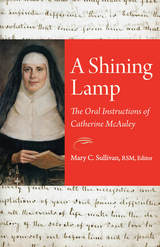
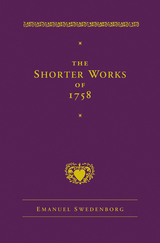
This volume contains four shorter works by the influential eighteenth-century mystic Emanuel Swedenborg. Translators George F. Dole and Jonathan S. Rose have produced an accessible rendering of these important yet easily overlooked works.
New Jerusalem: In this work Swedenborg outlines his theology in twenty-three brief chapters on major Christian topics such as love, faith, regeneration, the inner self and outer self, and the nature of the Bible. Nearly every chapter ends with what is in effect an index to that topic as it appears in his much larger study Secrets of Heaven.
Last Judgment: This work on the “end times” asserts that the Last Judgment foretold in the Bible does not involve the end of the physical world. Rather, the Last Judgment was an event of tremendous upheaval in the spiritual world, a nonmaterial apocalypse which has already occurred and which Swedenborg himself witnessed.
White Horse: This brief work is divided into two parts. The first presents the inner meaning of the white horse mentioned in chapter 19 of the book of Revelation. The second is effectively an index to passages concerning the Bible and its inner meaning in Swedenborg’s much larger work Secrets of Heaven. This work is a good short introduction to Swedenborg’s principle of correspondences between the spiritual and physical worlds, as well as to his unique view of the nature of the Bible.
Other Planets: Building on the eighteenth-century fascination with the possibility of life on other worlds and with traveler’s tales of other cultures, this work describes life on other planets in our solar system and elsewhere in the universe. Swedenborg undertook this work specifically to demonstrate that Jesus is God not just of planet Earth but also of the universe as a whole.
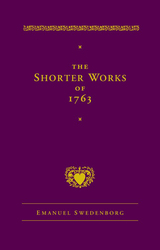
The four main short works in this volume by Swedish theologian Emanuel Swedenborg (1688–1772) form the basic foundation of his thought. Although originally printed as if they were stand-alone volumes, they have nearly always been published together, generally under the collective title “The Four Doctrines.”
The Lord discusses the nature of the man known as Jesus Christ, his divine nature, and the meaning of his crucifixion. For Swedenborg, Jesus was not simply a man, but the eternal divine that came to earth for the salvation of humanity.
Sacred Scripture is about the Word, by which Swedenborg means the parts of the Bible that he feels reflect a deep spiritual teaching. Swedenborg believes that study of the Word—which contains a wisdom that predates the written Bible and also transcends it—is the key to humanity’s spiritual development and its eventual union with the Lord.
Life discusses the nature of good and evil and the necessity of shunning sin and evil in order to experience true faith and become a spiritual person. In other words, this work is about how we ought to live.
Faith talks about faith as an acknowledgment of inner truth and the necessity of expressing such faith through good actions rather than simply holding beliefs. Swedenborg also delves into the true nature of charity and the way that it interweaves with faith to produce true goodness.
In addition to these short works, the volume includes a fifth work, which consists of two supplements to previous works by Swedenborg: a brief addition to Last Judgment and a longer addition to Heaven and Hell.
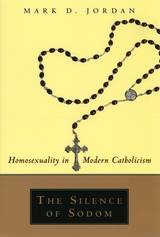
"[Jordan] has offered glimpses, anecdotal stories, and scholarly observations that are a whole greater than the sum of its parts. . . . If homosexuality is the guest that refuses to leave the table, Jordan has at least shed light on why that is and in the process made the whole issue, including a conflicted Catholic Church, a little more understandable."—Larry B. Stammer, Los Angeles Times
"[Jordan] knows how to present a case, and with apparently effortless clarity he demonstrates the church's double bind and how it affects Vatican rhetoric, the training of priests, and ecclesiastical protectiveness toward an army of closet cases. . . . [T]his book will interest readers of every faith."—Daniel Blue,
Lambda Book Report
A 2000 Lambda Literary Award Finalist
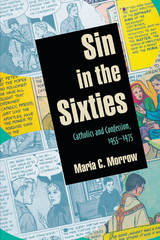
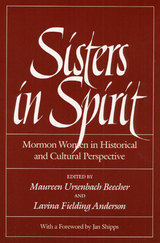
"The women who contributed to this book are among the best of the Mormon literati . . . [they] hold that there is hope within the church for change, for reform, for expansion of the place of women." -- Women's Review of Books
"Historians of women in America have a great deal to learn from the history of Mormon women. This fine set of essays provides an excellent introduction to a subject about which we should all know more." -- Anne Firor Scott, author of Making the Invisible Woman Visible.
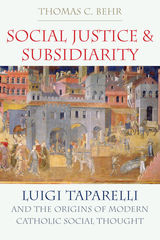
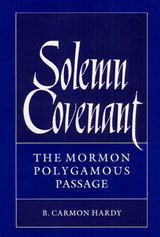

The Spirit of God brings together for the first time eight of Yves Congar’s previously untranslated writings on the Holy Spirit composed after Vatican II (from 1969 to 1985). Two of these selections offer general overviews of Congar’s pneumatology, a pneumatology based upon Scripture and the Tradition of the Church, but articulated in conversation with philosophers, ecumenical partners and non-believers. Other articles make clear the historical context of Vatican II’s pneumatology and the Holy Spirit’s crucial influence upon the unfolding of history and upon the moral life, the efficacy of the sacraments and, especially, upon ecclesial life.
The writings in The Spirit of God have been translated and edited by a team of scholars familiar with the work of the French Dominican theologian. An introduction situates each of the writings historically and highlights its theological significance. A bibliography lists Congar’s publications on the Holy Spirit, the major articles and books written about his pneumatology, and the major scholarly resources to which Congar made reference in the notes that accompanied these writings. An index of biblical references and of personal names is also included.
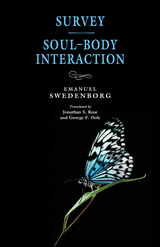
These two shorter works by Swedish theologian Emanuel Swedenborg (1688–1772), originally published separately and very different in content, both represent Swedenborg’s own effort to summarize complex areas of his thought.
Published toward the end of Swedenborg’s life, Survey of Teachings of the New Church was a forerunner to his final theological work, True Christianity. In Survey, Swedenborg discusses some key tenets of Christian doctrine, both Catholic and Protestant, and describes how his own theology differs from it. He focuses on key concepts such as the Trinity, the nature of faith and charity, and the spiritual nature of the Last Judgment described in the book of Revelation. Taken as a whole, the piece is a brief summation of the doctrines that Swedenborg felt were critical for the coming spiritual age.
Soul-Body Interaction addresses a crucial area of Swedenborg’s thought: the way that life flows from the transcendent God into all living things. Swedenborg describes the nature and structure of the spiritual world, including heaven, hell, and the intermediate world of spirits, and describes how the higher levels of being reflect a more perfect conjunction with God. He also traces the flow of the Lord’s love and wisdom into the soul of all living people, showing how it gives life regardless of their current spiritual state.
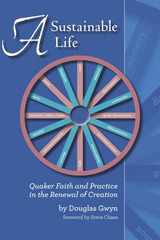
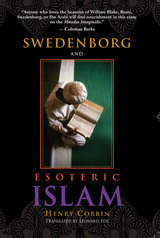
This volume makes two essays by Henry Corbin, the eminent French scholar of Islam, available in English for the first time. Although his primary interest was the esoteric tradition of Islam, Corbin was also a lifelong student of the theological works of Emanuel Swedenborg. The first essay, "Mundus Imaginalis, or The Imaginary and the Imaginal," clarifies Corbin's use of the term he coined, mundus imaginalis, or "the imaginal world." This important concept appears in both Swedenborgian and esoteric Islamic spirituality. The second piece, "Comparative Spiritual Hermeneutics," compares the revelation of the internal sense of the sacred boks of two distinct religions, Christianity and Islam.
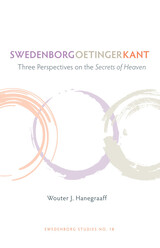
In this meticulous study, Wouter Hanegraaff examines the structure, themes, and development of Emanuel Swedenborg's massive work Secrets of Heaven (Arcana Coelestia), published between 1749 and 1756. Written as a work of biblical exegesis (of Genesis and Exodus), Swedenborg also interpolated material on his visionary experiences, which have long fascinated readers.
In the second part of the study, Dr. Hanegraaff examines the contemporary reception of the multi-volume work, particularly the critical reactions of Immanuel Kant and Friedrich Christoph Oetinger. He finds that Swedenborg's biblical exegesis, so important in his divine calling, was largely ignored in favor of the mystical experiences.
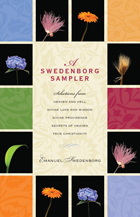
Swedish scientist and theologian Emanuel Swedenborg wrote volumes upon volumes based on the understanding he gained through visits to the spiritual world and from conversations with its inhabitants. For new readers of Swedenborg, knowing where to start and what to read can present an insurmountable task. This volume is a good starting point and provides samples of some of his most powerful writings, now available in new, contemporary translations.
What happens to our souls after we die? What is the afterlife like? What is the nature of God? Of evil? What can we do during our lives to help guide us to heaven? What kinds of answers can we find in the Bible? Selections from some of Swedenborg’s most popular works—Heaven and Hell, Divine Love and Wisdom, Divine Providence, Secrets of Heaven, and True Christianity—answer these questions and more.
Ideal for those new to Swedenborg’s theology, A Swedenborg Sampler offers tastes from a rich smorgasbord of spiritual insight.
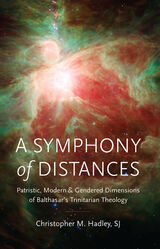
READERS
Browse our collection.
PUBLISHERS
See BiblioVault's publisher services.
STUDENT SERVICES
Files for college accessibility offices.
UChicago Accessibility Resources
home | accessibility | search | about | contact us
BiblioVault ® 2001 - 2025
The University of Chicago Press


